*NURSING > CASE STUDY > COVID 19 Unfolding Case Study Part-NRS-410V Pathophysiology and Nursing Management of Clients' Healt (All)
COVID 19 Unfolding Case Study Part-NRS-410V Pathophysiology and Nursing Management of Clients' Health
Document Content and Description Below
COVID 19 Unfolding Case Study Part-NRS-410V Pathophysiology and Nursing Management of Clients' HealthCOVID 19 Unfolding Case Study Part-NRS-410V Pathophysiology and Nursing Management of Clients' Heal... thJohn Taylor, 68 years old Primary Concept Immunity Interrelated Concepts (In order of emphasis) • Clinical judgment • Communication NCLEXClientNeedCategories Covered in Case Study NCSBN Clinical Judgment Model Covered in Case Study Safe and Effective Care Environment Step 1: Recognize Cues ✓ • Management of Care ✓ Step 2: Analyze Cues ✓ • Safety and Infection Control ✓ Step 3: Prioritize Hypotheses ✓ Health Promotion and Maintenance ✓ Step 4: Generate Solutions ✓ Psychosocial Integrity ✓ Step 5: Take Action ✓ Physiological Integrity Step 6: Evaluate Outcomes • Basic Care and Comfort • Pharmacological and Parenteral Therapies ✓ • Reduction of Risk Potential ✓ • Physiological Adaptation ✓ Part I: Initial Nursing Assessment Present Problem: John Taylor is a 68-year-old African-American male with a history of type II diabetes and hypertension. He came to the emergency department (ED) triage window because he felt crummy, complaining of a headache, runny nose,feeling weaker, “achyallover”andhotto the touch and sweaty the past two days. When he woke up this morning, he no longer felt hot but began to develop a persistent “nagging cough”that continued to get worse throughout the day. John is visibly anxious and asks,“Do Ihave thatkiller virus that I hear about on the news?” Personal/Social History: John lives in a large inner-city that has had over three thousand confirmed cases of COVID-19. He has been married to Maxine, his wife of 45 years, and is a retired police officer and active in his local church. 1. WhatdatafromthehistoriesareRELEVANTandmustbeNOTICEDasclinicallysignificantbythenurse? (NCSBN: Step 1 Recognize cues/NCLEX: Reduction of Risk Potential) RELEVANT Data from Present Problem: Clinical Significance: -history of type II diabetes and hypertension -initially symptoms were headache, runny nose, weakness, aches, and hot and sweaty -no longer feels hot but developed nagging cough -cough continued to get worse throughout the day -now has developed shortness of breath - both are comorbidities -initial symptoms could be mistaken for something else -now has classic symptoms of COVID 19 -seems to be progressively getting worse [Show More]
Last updated: 2 years ago
Preview 1 out of 11 pages

Buy this document to get the full access instantly
Instant Download Access after purchase
Buy NowInstant download
We Accept:

Reviews( 0 )
$9.00
Can't find what you want? Try our AI powered Search
Document information
Connected school, study & course
About the document
Uploaded On
Aug 30, 2021
Number of pages
11
Written in
Additional information
This document has been written for:
Uploaded
Aug 30, 2021
Downloads
0
Views
83


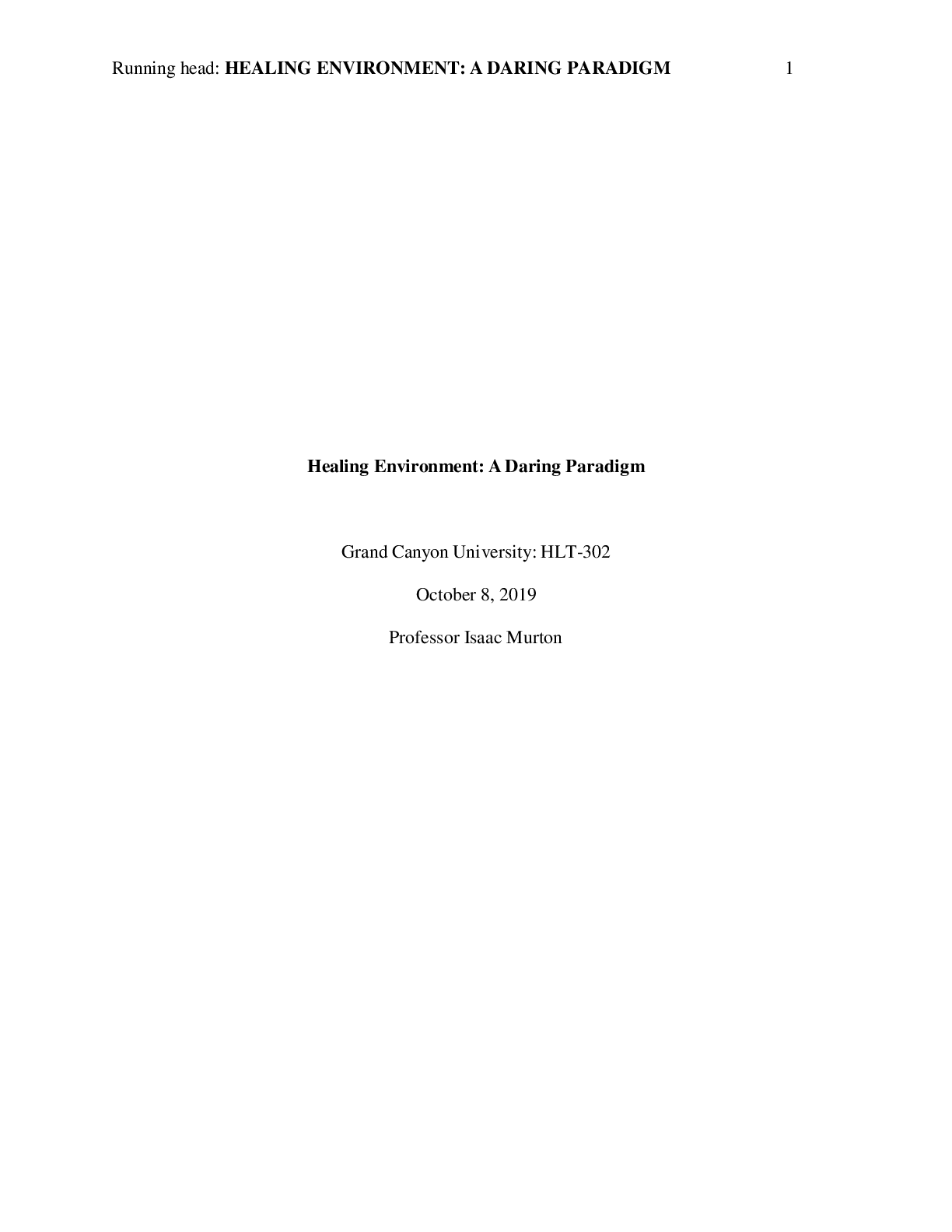
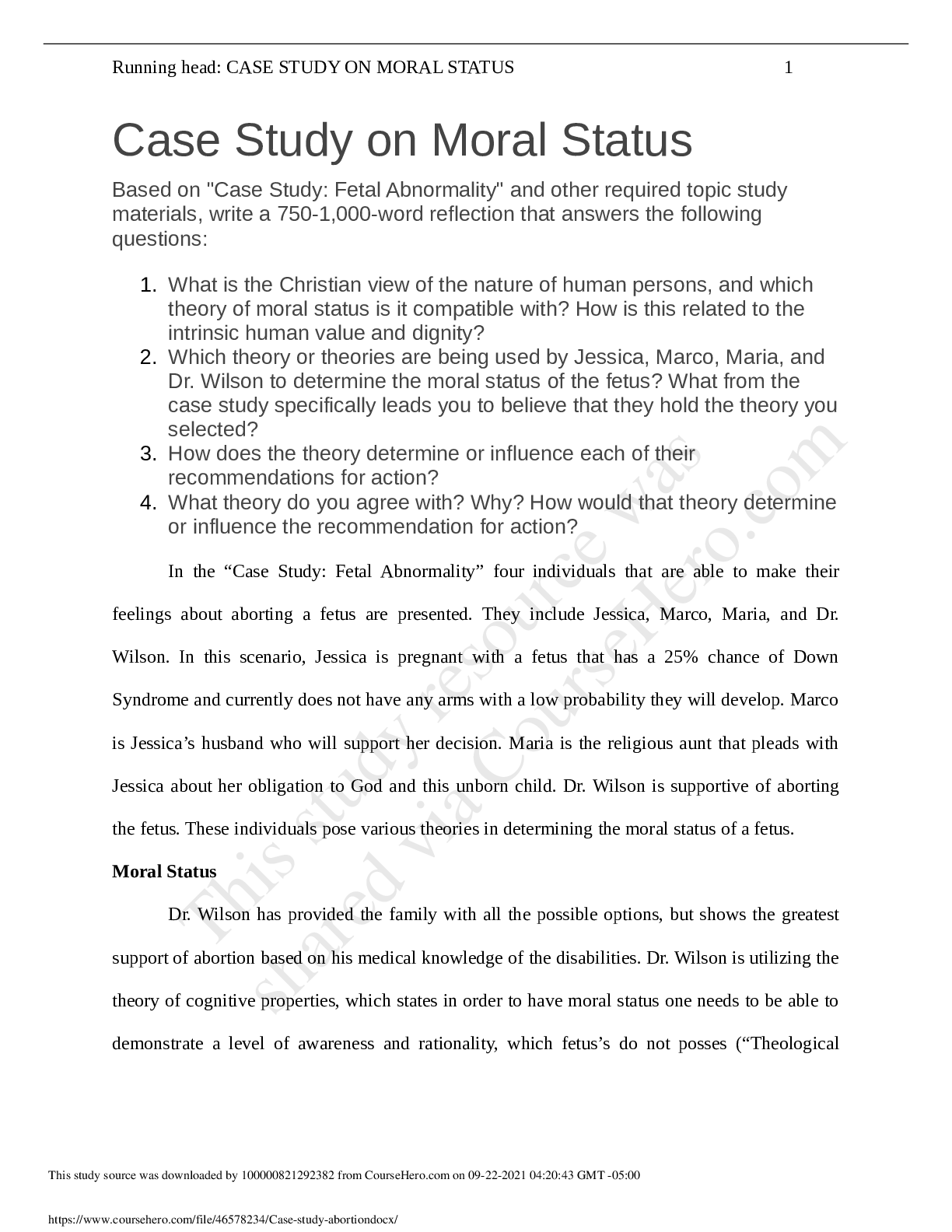



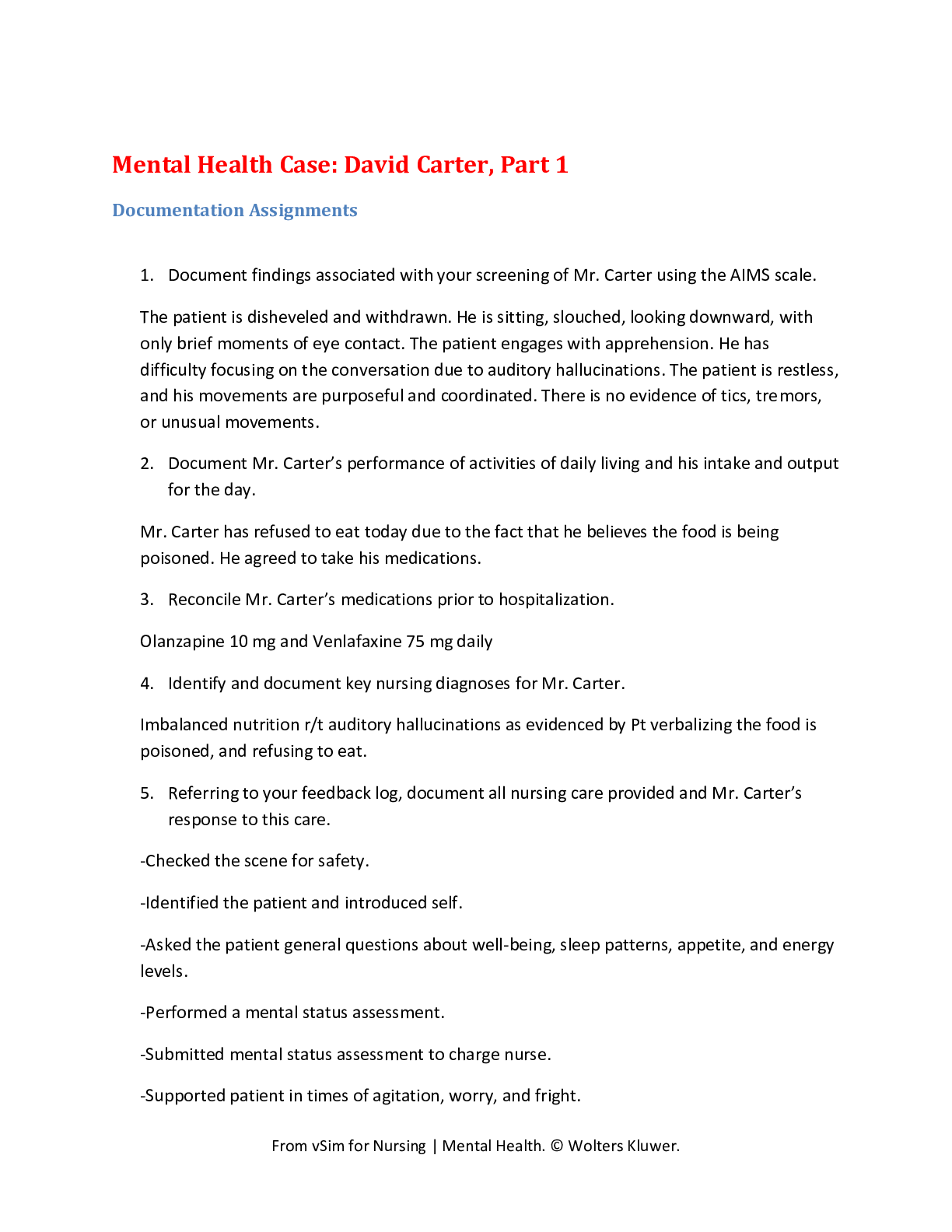
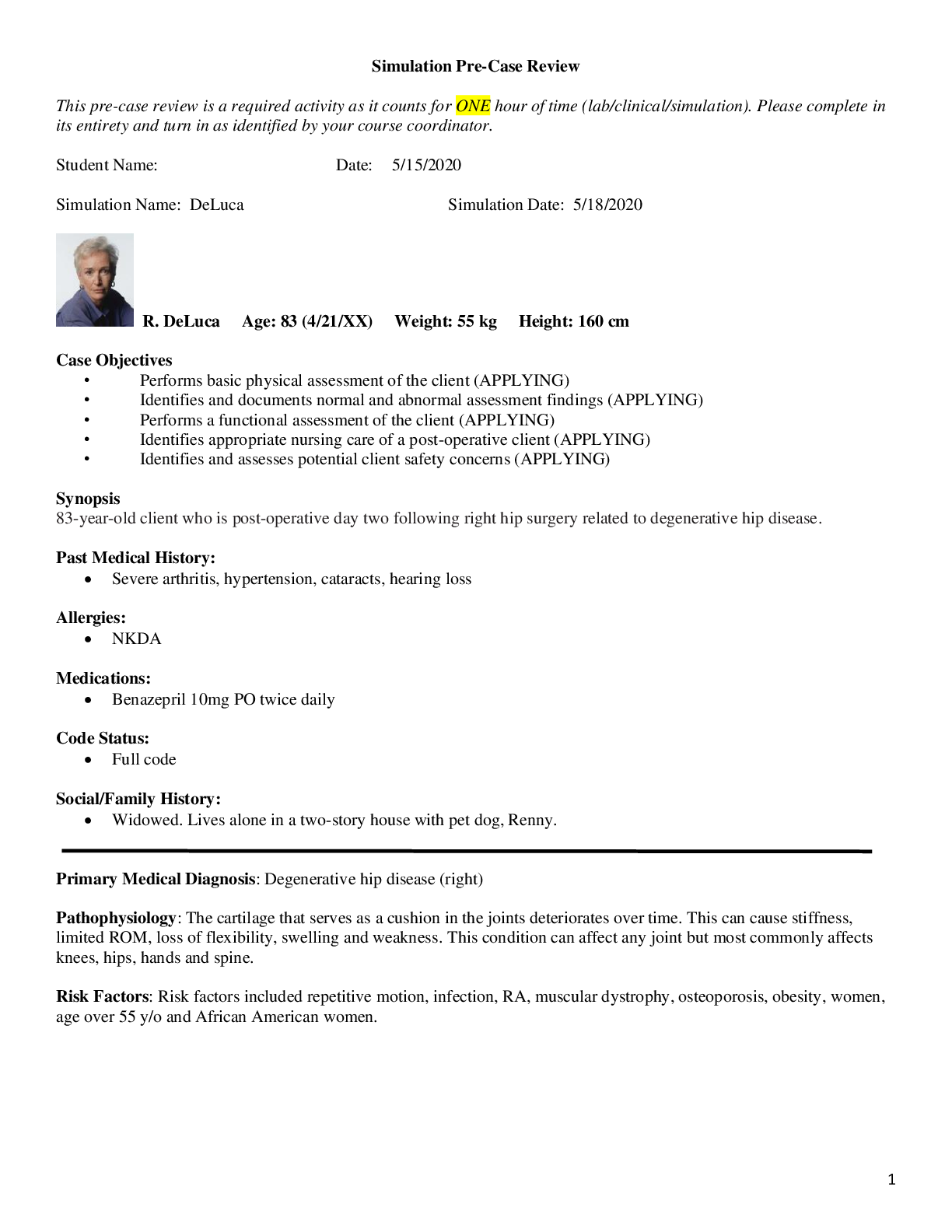


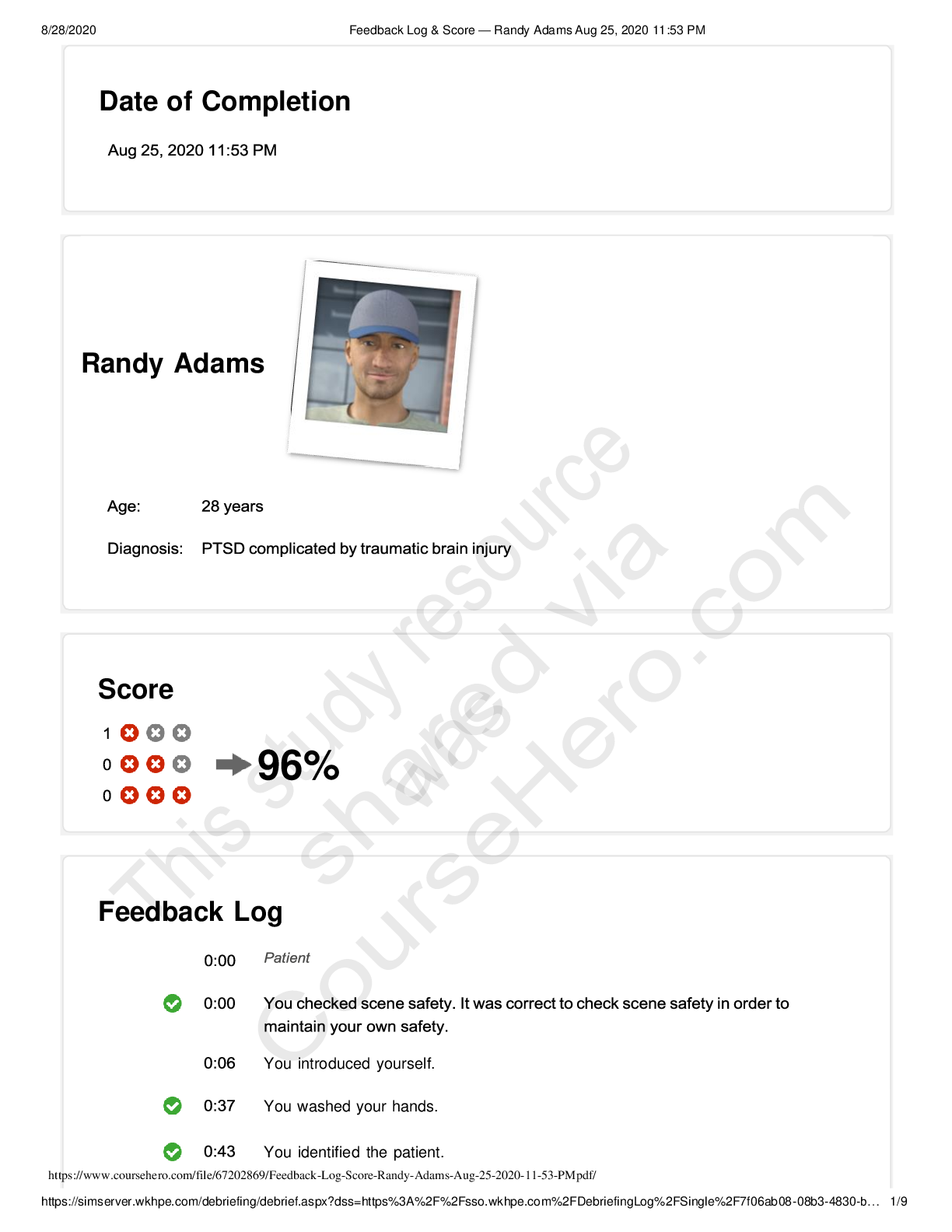


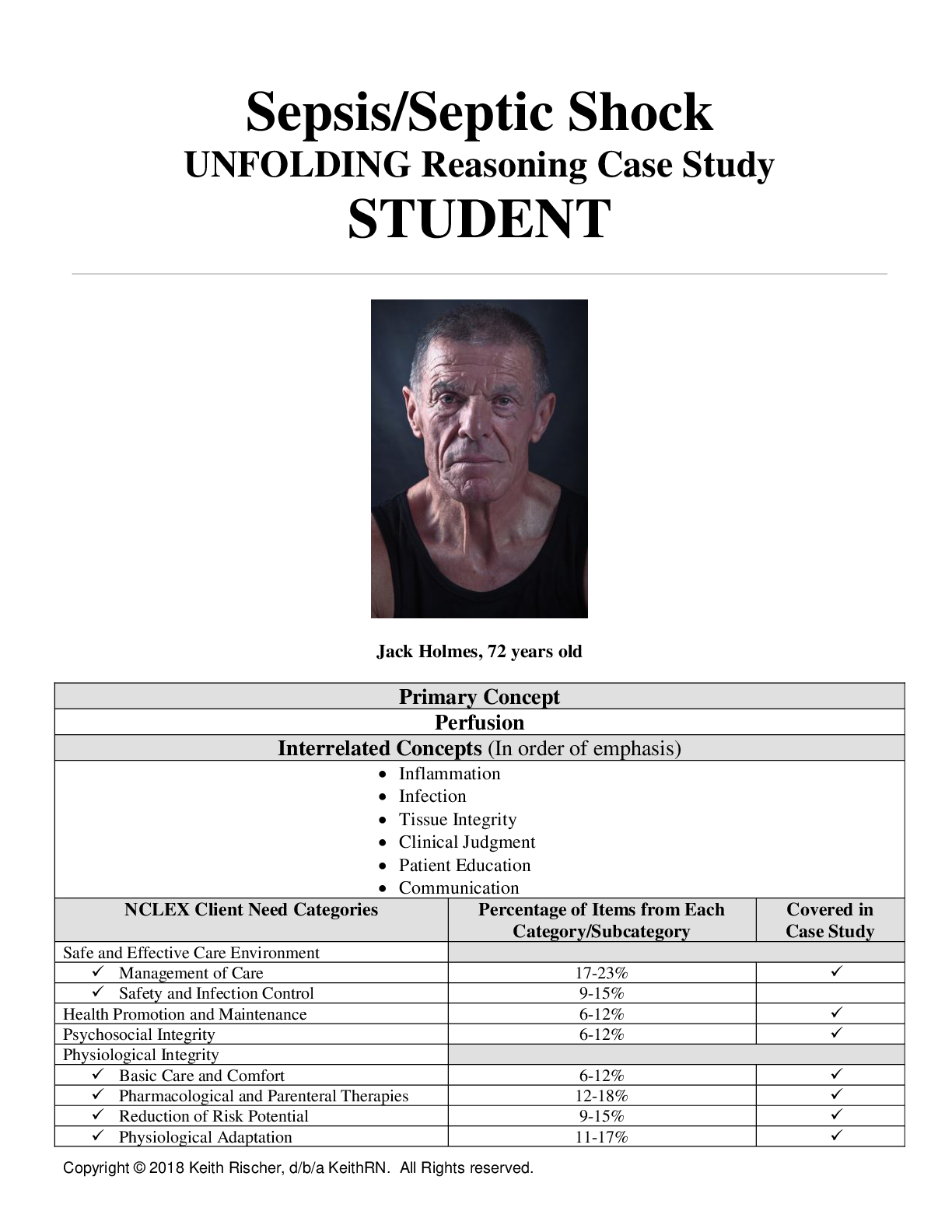


.png)

 Correct Study Guide, Download to Score A.png)
 COVID-19 Unfolding Case Study Part 1.png)

